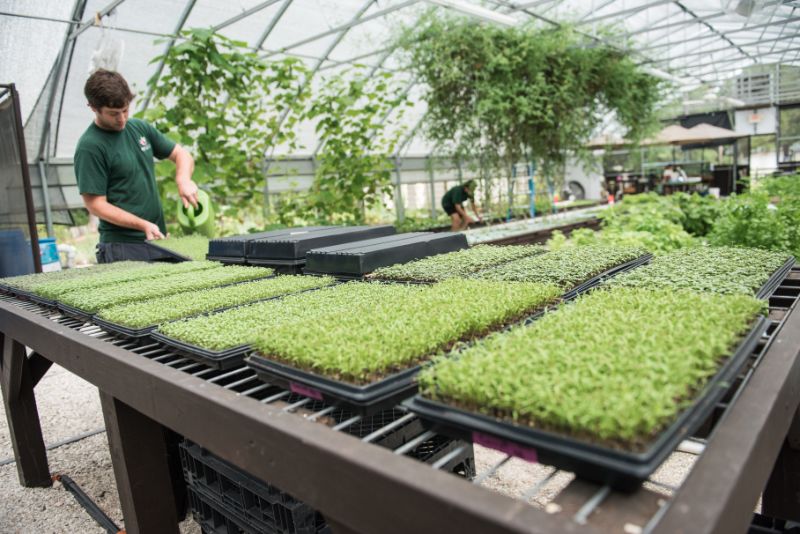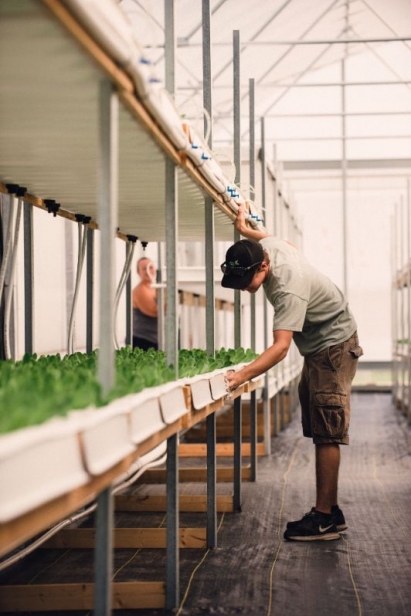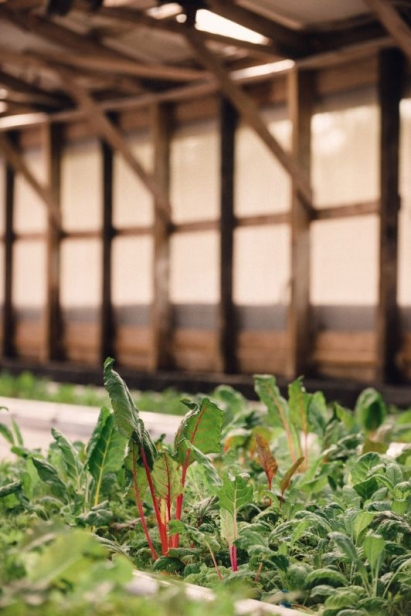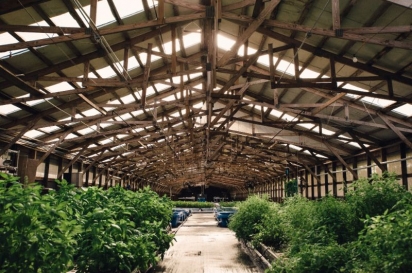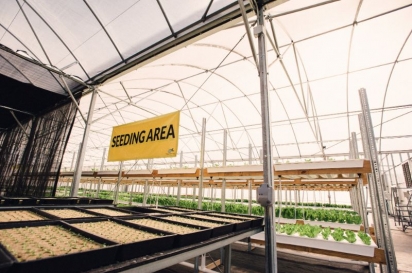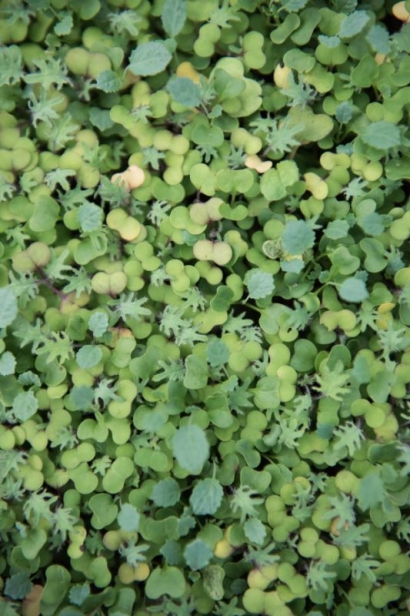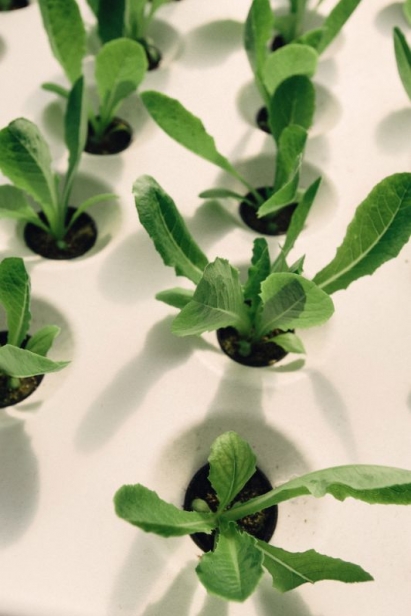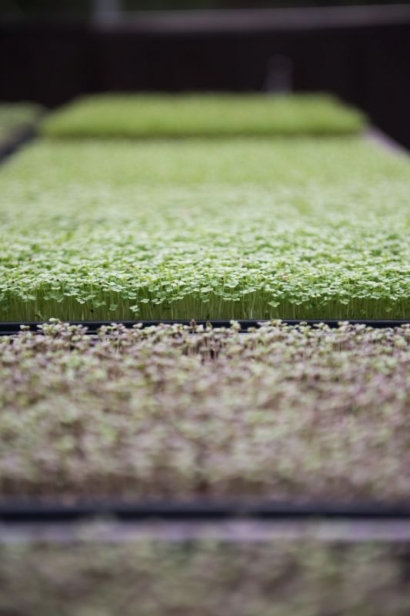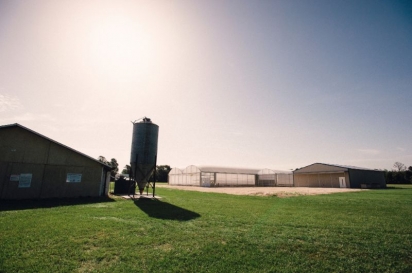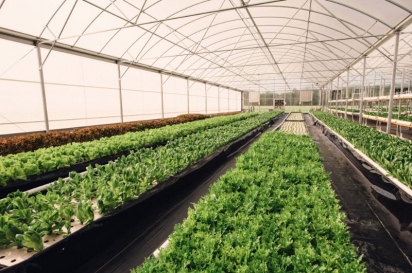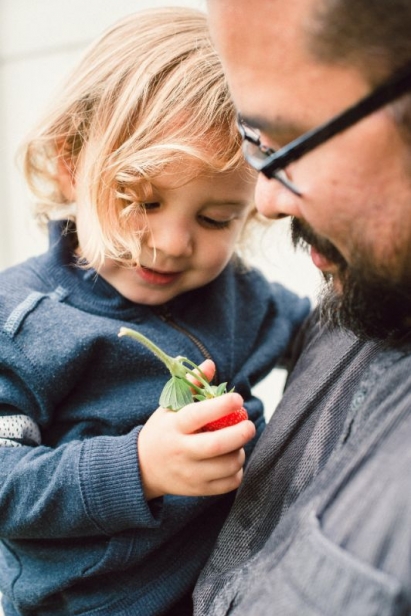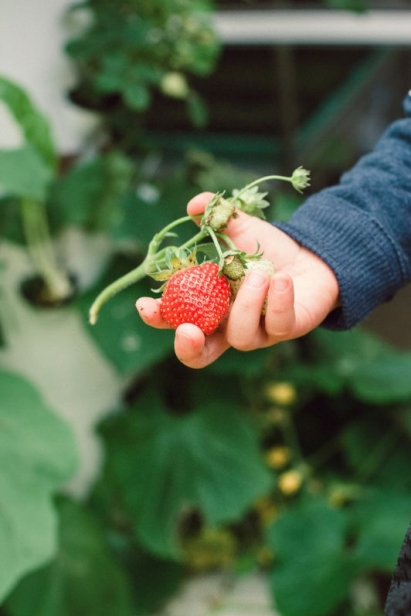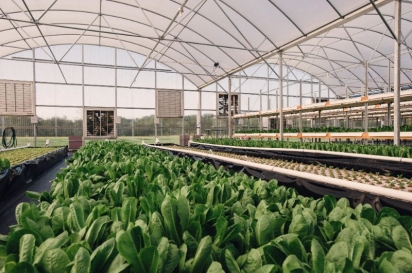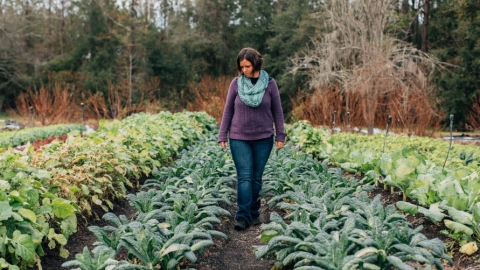Dirt-Free Farming
When we think of the food we put on our plates each day, most of us imagine verdant fields where our salads sprout from the ground, orchards where our fruit dangles from trees and barnyards where chickens roam free to produce eggs at their leisure. These are the things we’ve been taught to associate with growing food.
What we may not think about, however, is that, for better or worse, most of the food consumed in the U.S. today would not exist without sophisticated technology. From advances in packing machinery to the production of seed and feed, food and technology walk hand-in-hand. For decades, it has fed us. And let’s be honest, at first technology was exciting. Tidy cubes of fun-to-eat food we called fish sticks. Orange-colored powdered cheese and elbow noodles. A Swanson TV dinner? The 1953 symbol of living the American Dream.
For years, technology meant innovation, and we ate it up.
Today, however, the tide is turning. For a decade or more, new generations of consumers have argued we’ve gone too far, and the Real Food movement is officially on. But what still holds true in our modern-day food system is this: Technology is here to stay. The trick is in harnessing it for good.
Northeast Florida has seen an increase in the use of hydroponic, aquaponic and aeroponic cultivation methods in the last few years. More and more regional growers are experimenting with various methods of food production that address environmental and efficiency concerns. Growers run the gamut from backyard farmers feeding friends and family, to multi-greenhouse operations supplying local restaurants, farmers’ markets, specialty grocers and more. In short, technology is now being used in brand new ways: serving up real food.
A NEW LIQUID LANDSCAPE
Hydroponics is a method of growing plants without soil, using mineral nutrient solutions. Plants may be grown with their roots directly in fortified water, or in an inert medium such as perlite. Hydroponic systems can be easily set up indoors or out, within a matter of hours, and even novice gardeners can manage the process of maintaining the required water quality. Working in a greenhouse can extend the growing season, eliminating down time dictated by the climate. The controlled environment of a greenhouse can potentially increase crop yield and speed the time to harvest, while eliminating soil removes soil-based bacteria and other potential pathogens.
Aeroponic systems differ from hydroponics in that there is no soil substitute planting material holding the plants in place; rather, plants are grown in an air or mist environment. Water flows through the system and directly nourishes the roots.
OUR REGION’S INNOVATORS
Father and son Fred Sr. and Freddie Bacon began running a hobby farm in North Jacksonville in 2008, raising lettuces and specialty greens for local farmers’ markets and restaurants. Today, Bacon’s Select Produce is a family-run commercial hydroponic farm growing in greenhouse dome structures. The plants are carefully tended and hand-harvested from horizontal rows of PVC tubing.
All irony of their name aside, the Bacon family was one of the first hydroponic farms in our area and an inaugural vendor at Riverside Arts Market, where they would sell hydroponic lettuce directly to consumers each week. When produce wouldn’t sell entirely to market customers, Bacon’s began selling to local chefs. This relationship eventually helped the farm focus on products they could cultivate consistently while maintaining quality standards.
Family-owned and operated Veggie Confetti Farm in St. Augustine is another small business now growing a wide mix of microgreens hydroponically, mostly from organic seed. They maintain a self-contained, climate-controlled operation with grow lights, misting and hand watering their tender seedlings with a combination of organic plant-based nutrients.
While many varieties of vegetables can be grown in a liquid landscape, delicate microgreens respond exceptionally well to these types of growing conditions. Although small in size, microgreens are packed with flavor and nutrients. Chefs love to decorate dishes with the slender gems, trimmed from flats at the moment of service. What’s more, tender crops like microgreens get from farm to plate in record time using greenhouse methods.
HARVESTING SEAFOOD AND PRODUCE
Taking hydroponics one step further are aquaponic systems. With roots in ancient cultures from the Egyptians to the Aztecs, aquaponics is a time-tested concept with real potential for modern-day application on both new and existing farms. A hybrid of hydroponics and aquaculture (raising fish in controlled circumstances), aquaponic systems raise fish in tanks and use the nutrient-rich filtered runoff water to grow plants. The plants, in turn, continue to clean the water by removing potentially harmful nutrients like nitrogen, making it safe to recirculate the water back to the fish. Despite its name, aquaponics actually uses 95% less water than traditional terrestrial farms, by keeping water moving in a closed loop instead of flowing into the ground.
Although the initial setup cost is higher and the know-how required to build an aquaponics system is more sophisticated than conventional farming, once it’s up and running it is one of the most energy- and cost-efficient food production methods.
In an aquaponic system, as in a hydroponic one, water is circulated through a growing environment to nourish plants not rooted in soil. But what happens to the water before and after—as it draws nutrients from fish tanks and puts water back into fish tanks in a closed circuit system—makes the method truly unique. The balanced, synergistic ecosystem in which the fish and plants coexist requires three to six months to establish, and significant levels of training and expertise to set up and to maintain.
One small farm that has quickly become an integral part of the community in our region is GYO Greens, a favorite of local chefs since its inception in 2013. Employing principles of organic farming, they rely on beneficial insects and companion planting to harvest a wide selection of herbs, vegetables and microgreens in their aquaponic environment. Open to the public on Tuesdays, visitors can pick their own greens at the lushly planted greenhouse in Ponte Vedra Beach.
A larger operation in the region started as an answer to a growing problem, quite literally. When Traders Hill Farms was founded in 2012, the surrounding landscape was peppered with hundreds of abandoned chicken barns, remnants of Tyson’s one-time dominance in the region. When Tyson pulled out, the challenge was finding ways to put both the farms and neighboring communities back to work.
A fourth-generation farmer and educator, Angela TenBroeck embraced the challenge by creating an aquaponics research lab using the abandoned Tyson facilities. Over the years, as the farm has taken shape, TenBroeck and her employers, the Blaudow family, realized they had a business model that could be easily replicated throughout the area, and set about marketing both their crops and their methodology. Angela now manages the daily operations of Traders Hill Farms, and is the executive director of its research arm, the Center for Sustainable Agricultural Excellence and Conservation (CSAEC).
Traders Hill Farms recently expanded into a commercial greenhouse operation capable of producing 3,125 pounds of their custom salad mix each week. Lettuces, herbs and specialty greens grow in colorful rows in raised beds, while in the next room tilapia grow in a series of large tanks, harvested for sale every eight months. The fish are fed a mixture of organic, nutrient-dense material, including duckweed grown in their aquaponics system. Outside the greenhouse, in the space between the old chicken houses, Traders Hill grows a bumper crop of heirloom tomatoes, squash, eggplant, peppers and more.
TenBroeck and the CSAEC are working with the Florida State College at Jacksonville to secure funding for the creation of a full scale commercial aquaponics operation in downtown Jacksonville. The goal is to train future farmers in all aspects of the business of urban farming, including growing, maintaining, marketing, sales and logistics. If they succeed in creating the project, crops grown will go to FSCJ’s culinary program and excess yields to a food bank for students in need.
BRINGING IT HOME, DOING GOOD THINGS
About four years ago, Fernando “Tito” Sosa and his wife, Elishia, began growing their own fruits and vegetables in their backyard using an aeroponic system. The amount of produce they were able to harvest on a daily basis not only reduced their monthly grocery cost, but increased the quality of their diet.
When he applied to be an innovator during the 2015 One Spark festival, Tito was invited by Alison Behringer of Sweet Pete’s Candy to use their building’s second-floor patio space to showcase his urban aeroponic tower garden concept. Today, Sosa’s company, Water Me Green, is leading the march for urban farming advocacy, with a focus on growing fresh, clean, nutritionally dense produce, especially in areas where access to food is limited.
“Helping families, transforming Jacksonville and revitalizing struggling communities are all part of what drives us to bring Water Me Green to the urban core,” says Sosa.
And Sosa is not alone in his desire to give back. This sense of philanthropic duty is a recurring theme for many of our area’s producers. Food-tech farmers are no exception. Many have a charity partner that benefits from their unsold produce. Some actually bring the farm to the charitable organization and others are finding ways to yield sustainable revenues from programs that utilize new farming techniques.
For example, Atlantic Beach Urban Farms donated a 10-tower vertical growing system to the Beaches Emergency Assistance Ministry (BEAM), a nonprofit that operates two food pantries in the beaches communities of Jacksonville. The system is a welcome addition to the organization’s urban garden program.
An equally creative feel-good fit is an aquaponics project recently integrated into the existing commercial greenhouse at Berry Good Farms, a centerpiece of the horticulture program at North Florida School of Special Education (NFSSE). Berry Good Farms and the NFSSE teach and employ people who are intellectually disabled; through maintenance and production of the aquaponic system, students are learning real-life skills that yield agricultural products sold to the.
FOOD FOR THE FUTURE
“The potential for urban farming with alternative methods is huge,” says Traders Hills’ TenBroeck. “We’re not in competition, we are actively seeking ways to work with one another,” she continues. The logistics of getting every crop to market at just the right time and place are being discussed in farmers’ groups and the expanded use of these growing methods represent a win-win for Northeast Florida.
While there are still plenty of things to question about technology’s involvement in our larger food system, the proliferation of farming techniques like hydroponics, aeroponics and aquaponics doesn’t have to be one of them. Will these new techniques ever replace traditional farming methods? Not likely. But will they provide us new resources for growing fresh local food? Absolutely.
Our region’s new generation of farmers is thinking creatively and sustainably about systems to feed our community, and while these innovations may not be quite as novel or exciting as vacuum-packed TV dinners once were, they are guaranteed to be more delicious.


